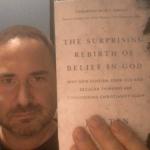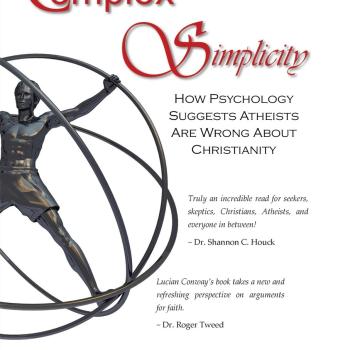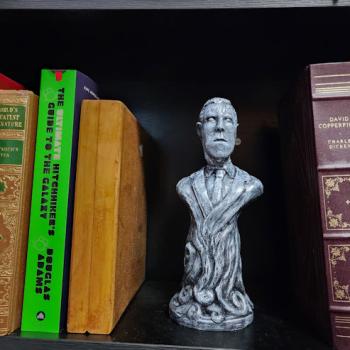The History of Religious Research
While religious movement (people entering religious communities, switching religious communities, or leaving religious communities) has always been present, it tends to be a difficult topic to research given that religious movement has the tendency to be slow, sporadic, and unpredictable. Meaning that a researcher would have to sit about in any given church lobby for years to get enough samples for research. As a result, when studying the topic of religious movement in the past, researchers tended to look toward New Religious Movements (NRM) – movements which sprung up quickly, rapidly gathered followers, and then died down or died out. NRMs tend to provide a lot of data over a relatively short period of time such that researchers may complete their work without years of waiting for samples or relying entirely on qualitative research.
Work with NRMs was particularly prominent in America between 1960 and 1980, when NRMs were coming and going with relative frequency throughout the United States. Most of these movements sprung out of Christian churches but shed most of the orthodox beliefs associated with Christianity, replacing them with novel beliefs and practices. While researching the unique experience of women during deconversion, the first study I read (Jacobs, 1984) looks at the experience of women specifically in such movements, with nine out of the seventeen subjects coming from subsets of Eastern/Pantheistic religions, and the rest coming from some form of extreme charismatic Christian movements.
The paper concluded that the women joined these groups voluntarily because of a perceived need in their lives. However, upon joining the groups, they discovered that these movements practiced extreme forms of traditional gender roles, with men as the only ones allowed direct access to the religious teachings and as the only ones permitted roles of leadership, while women were forced into roles of service to men.
Perhaps one of the most exploitative of these roles was that of so-called “flirty fishing,” wherein the women were expected to recruit new followers to the religion by flirting with potential recruits, dangling the suggestion if they joined the religion, they may have the opportunity to pursue relations with the women in the group.
Because of this, women within these groups began to connect their spirituality with their sensuality and to connect failure to entice new recruits with spiritual failure. They would then return to groups that expected them to be modest and chaste.
The attraction of the movement to the women, according to the research, was love. But not in the generic sense of good will toward others, but in the more specific sense of romantic involvement or intimacy with others. However, the love which served as the attraction to the women was used as a method by which they were controlled, and of the seventeen women involved in the study, 5 reported instances of physical abuse from the men, and fifteen reported instances of psychological abuse. In several of these movements, intimacy with the movement’s leader was held up as a goal or reward, and to become intimate with the leader was seen as participation in the divine, with the divine represented as distinctively masculine.
Women were attracted to these movements by an expectation for love, in the sense of emotional connection and companionship. When the romantic notion of love was exchanged for physical intimacy, the women in the study were disillusioned, and this disillusionment was the cause of their deconversion. The author suggests that the patriarchal system within these NRMs, along with women being seen as a resource subservient to men is characteristic of most religions.
Modern Research
The second study I considered was much more contemporary and focused not simply on the exit of women from religion, but also on the formation of an atheist identity (Abbott & Anaya, 2022).
This was qualitative research using a critical grounded theory design. In practical terms, this means that the research was conducted by individual interviews with a relatively small sample of women. The interviews were then compared in order to discover themes and form a theory. The “critical” part refers to “critical theory,” which suggests that any given phenomena must be understood through the narrative lens of the person who experienced it, and that all psychological or social problems stem from power imbalances or “inequity.” Given that this was a feminist study, the researchers went into the interviews with the assumption that the power imbalance between men and women was the explanation for any problem they encountered.
Thirty-one women who identified as atheist were interviewed about their experiences exiting religion and their experiences integrating (or attempting to integrate) with the atheist community. Because this study was conducted under a critical theory approach, the researchers acknowledged their biases in the study, and included their purpose of dismantling patriarchies as they exist both within the Christian and atheist communities. The interviews resulted in the researchers identifying six themes present within women who de-identify with Christianity and then attempt to integrate with the atheist community. These include, in no particular order:
- embracing atheism as a form of freedom
- escape from the patriarchy of Christianity followed by a challenging of the patriarchy within the atheist community
- distancing themselves from their atheist identity as a method of avoiding anti-atheist discrimination embedded within culture
- felt expectations to conform to the norms established by Christianity
- the necessity of thoughtfulness when disclosing their experience to others
- the value and difficulty of connecting with other atheists.
The embrace of atheism as a form of freedom is a common theme in deconversion. One typically exits the church as a form of escape, either from an aversive environment, or because one has life-difficulties not being resolved by one’s religious belonging. Atheism is sought as a form of freedom from whatever difficulties one had within the church.
For those who might assume I am speaking of emotional and trauma-related exits rather than having rational reasons to believe that Christianity is false and atheism is true, it is worth mentioning that the act of holding contradicting ideas in one’s head is, in fact, emotionally uncomfortable. And leaving one of those ideas in favor of the other is a way of resolving this discomfort. So, in fact, when one transitions between views for rational reasons, there is still an underlying emotional component.
The third point – distancing oneself from atheist identities as a way of avoiding discrimination is a recuring theme in atheist communities who feel marginalized. Further, if one’s family and friends are still Christians, it can be tempting to hide one’s atheist identity in order to maintain those relationships.
The second point appears to be the primary thrust of this research paper: both Christian and atheist communities are dominated by men, and therefore both represent power structures unfriendly to women. This may be true, however as presented in this research, it seems a bit like question-begging in that the researchers began with the assumption that the women left because of Christian patriarchy, and the interviews did not allow for the women to independently identify their reasons for leaving. The data in this study are no doubt valuable, but would be more so if the study allowed room for the women to express their own reasons rather than assuming those reasons in the questioning.
Leaving the Latter-Day Saints
The third study I reviewed was focused on the experience of women who exited LDS. Here, researchers conducted semi structured interviews with 20 participants who qualified. The interviews revealed that gender did play a role in the deconversion of the participants under examination. Specifically, researchers found that the definitive factor was authenticity. Participants expressed that their inner, perceived self was not authentic to the social position in which they found themselves. The move from religious to irreligious was a method by which they were able to achieve harmony between their self-perception and their perceived social role.
To understand this, think of the proverbial “ugly duckling.” In this proverb, a swan’s egg somehow finds its way into a duck’s nest. The swan grows alongside the ducks and is told she is a duck. However, the swan’s appearance, instincts, and mannerisms do not comport with duckhood. Living as a duck feels inauthentic. When she leaves to join the swans, she finally feels authentic because her personal experience is consistent with her new identity.
Similarly, the participants in this study were being told their role in life through the lens of their religion, but it did not feel authentic to their inner experience. Upon leaving the church, they were free to match their behaviors and identity with their felt-identity.
Limitations or Gaps in the Research
Based on the available literature, the relationship between women and deconversion seems under-explored. Two of the studies cited delt with the exit of women from fringe religions, rather than the dominant evangelical movement. And in these two studies, the women involved did not explicitly become atheists as a result of their exit, or if they did, this was not explored by the research.
The fact that the only study which explored the exit of women from Evangelical Christianity in favor of atheism focused on the experience of the women under a critical theory structure limits its application in the broader research. While these interviews and the data they yielded are no doubt valuable, quantitative research on the subject, or further qualitative research under a more objective framework may yield data which can be generalized to the broader field rather than put to work specifically for feminist studies.
In the first study explored, the point of conflict was a disillusionment of the women involved, who joined the religion in order to experience emotional connection, but were instead sexually exploited by the men. The second study began by seeking to dismantle patriarchy in both Christian and atheist communities. In the third study, the motive for departure appeared to be the gender identity the LDS church superimposed upon women versus their perceived identity.
Perhaps the question raised by all three studies is what is the function of women in the church, and is it consistent with the needs, desires, and authentic identity of women?
References
Abbott, D. M., & Anaya, E. J. (2022). “Breaking free”: A grounded theory study of atheist women in the United States. Psychology of Women Quarterly, 46(4), 501–517. https://doi.org/10.1177/03616843221115338
Gull, B., Smith, J., & Cragun, R. (2023). Outcast women. Nova Religio, 26(3), 7–29. https://doi.org/10.1525/nr.2023.26.3.7
Jacobs, J. (1984). The Economy of Love in Religious Commitment: The Deconversion of Women from Nontraditional Religious Movements. Journal for the Scientific Study of Religion, 23(2), 155–171. https://doi.org/10.2307/1386106















